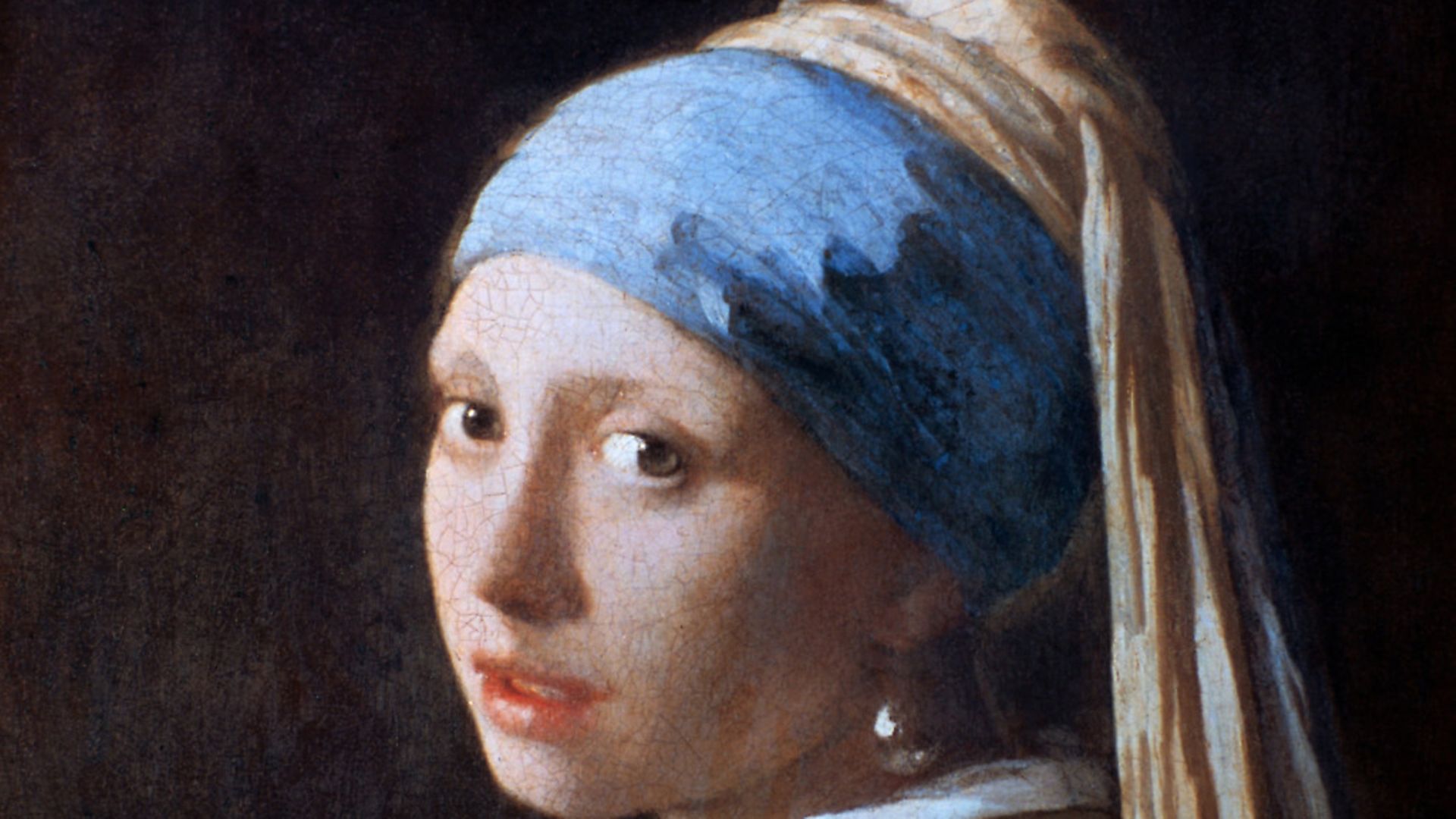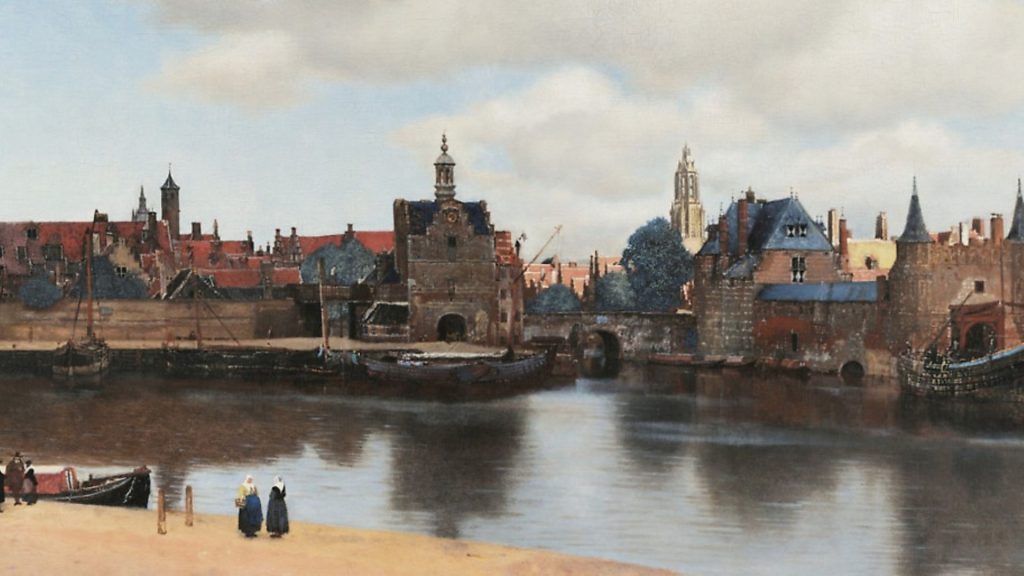
A pioneering partnership between Google and a leading Dutch museum has brought together every surviving Vermeer painting for the first time ever and exhibited them online. FLORENCE HALLETT considers what it means for art.

Turning towards us, her lips slightly parted as if about to speak, or kiss, her turban swathing her in an exotic glamour, The Girl with the Pearl Earring is one of the most famous and enigmatic paintings in western art. Made by Johannes Vermeer (1632-1675) in around 1665, it has inspired a novel and a film, and is the star attraction at the Mauritshuis in The Hague, where it draws visitors from all over the world, and is proudly known as the Mona Lisa of the North.
The Girl with the Pearl Earring is the most celebrated of just 36 surviving paintings by Vermeer, which are prized as much for their scarcity as for their technical brilliance and ambiguous, atmospheric narratives. But if bringing them all together in one place would undoubtedly go down as one of the great exhibitions of all time, it is an ambition that has so far remain unfulfilled.
A number of Vermeer’s paintings are simply too fragile to travel, and The Concert, 1663-66, has not been seen since it was stolen, along with paintings by, among others, Rembrandt, Degas and Manet, from the Isabella Stewart Gardner Museum in Boston in 1990, in what remains the biggest unsolved art theft in history.
Now, for the first time, all 36 paintings have been brought together in an online exhibition created by the platform Google Arts & Culture and curated by the Mauritshuis. Meet Vermeer can be viewed anywhere in the world, using a smartphone and Google’s Pocket Gallery, a new feature available via the Google Arts and Culture app.
It was developed at the Google Lab in Paris, a place that boasts a wall of screens straight out of James Bond; here software engineers and developers meet artists and other creative professionals to find new ways to connect art and culture with technology.
The Pocket Gallery uses augmented reality (AR) to impose the virtual gallery onto the space you are actually in, allowing you to walk around the exhibition using your phone as a window, experiencing it at actual size, stepping closer to the paintings to see them in minute detail, and opening information panels to find out more about each painting.
For Emilie Gordenker, director of the Mauritshuis, the project is the realisation of a dream that furthers the museum’s commitment to sharing both its collection and expertise. Built in the 17th century as the home of count Johan Maurits van Nassau-Siegen, the Mauritshuis has been a museum since 1822, but retains a distinctive, domestic intimacy even so.
Building work to expand the museum was completed in 2014, resulting in a fusion of contemporary and 17th century architecture. This, says Gordenker, ‘very much captures who we are today: we combine 17th century history with a very modern feel and this is one of the reasons I wanted to work with Google, to bring this history to life using their technologies’.
With just 850 paintings, all from the Dutch Golden Age, the Mauritshuis is a small museum with an unusually narrow remit. But the quality of its works sets it apart, with paintings like Rembrandt’s The Anatomy Lesson of Dr Nicolaes Tulp, 1632, and The Goldfinch by Carel Fabritius, 1654, (made famous by Donna Tartt’s novel of the same name), highlights in a uniformly superb collection.
‘We have a unique combination’, says Gordenker, ‘And this allows us to have great partnerships. We really play with the big guys: we work together with the National Galleries in London and in Washington, the Louvre, we operate on that level.’
Nurturing relationships with partner museums and galleries has been essential to the success of Meet Vermeer: the Mauritshuis holds three Vermeer paintings and the remainder are scattered across seven countries and 17 institutions. ‘I had sleepless nights, I confess’, says Gordenker. ‘Because it wasn’t going to work if we didn’t get everyone on board. But I’m delighted to say that everyone believed that this was going to be a really strong project.’
For Google, the Meet Vermeer project represents a step up from previous explorations in augmented reality, which had looked for ways to bring single artworks into a user’s space, and crucially, to give a real sense of scale.
Works of art in reproduction, whether in books or online, can never convey actual size, and achieving this is one of the most valuable contributions made by AR. ‘We wanted to take this to the next level’, says Michelle Luo, product manager at Google Arts & Culture. ‘Not only to think about what we can do to understand a single artwork to scale, but what we could do with a whole collection. How could we bring an exhibition into your own space, allowing you to experience it through your smartphone wherever you are in the world?’
Because this is an exhibition that could never happen in the real world, it was, says Luo, ‘a perfect opportunity for us to begin to think about how we might display an entire collection in a virtual space’.
Virtual it may be, but an architectural consultancy was involved in the design of the gallery, and the paintings have been hung thematically, much as you would expect to see them in a conventional exhibition. But if the exhibition team resisted trying out outlandish solutions, the experience of working on a virtual project was liberating.
Designer Andy Joslin explains: ‘You don’t have to think about whether it’s going to fall down, or where the toilets are going to go – it’s a virtual space – so really it’s about how to make the arrangement interesting.’ For Gordenker, such freedom took some adjusting to: ‘Andy called me up one day and said, ‘You realise don’t you, that you can build any space you like around the paintings’. It takes a little while to think this way – it’s actually very simple, but it’s complicated for us as curators because it completely changes the way that you look at the art and consider how, in an ideal world, you’d want to display it. So it took a while to figure it out. Just this morning someone said to me, ‘So what happens if you find a new Vermeer?’, but this is the great thing, you can just build a new room, no problem.’
Meet Vermeer is the latest project from Google Arts & Culture, an online platform set up in 2011 with 17 cultural institutions, including the Frick Collection in New York, the Gemäldegalerie in Berlin, and the National Gallery in London.
The platform began as a ‘20% project’, an initiative that requires Google employees to spend 20% of their time developing a project related to their own personal interests.
The platform’s mission is to provide access to art and culture to ‘everyone, everywhere’ and, with more than 1,800 partner institutions worldwide, it has become a significant presence in the cultural sphere, providing often impoverished institutions with resources they would otherwise be unable to access.
Google’s Art Cameras travel the world’s museums, producing ultra-high resolution images of artworks that are transforming the way that art can be accessed and viewed online, reproducing them in far greater detail than could be seen with the naked eye.
With so much available online, the inevitable question for galleries and museums is the extent to which such resources help or hinder actual visitor numbers. Gordenker points out that such anxieties were first raised in the late 1990s when museums began to put content online, amid worries that people would stay behind their desks rather than visit the real thing. But she says, ‘I thought at the time, ‘that’s got to be wrong’ because why do all these people crowd around the Mona Lisa? They know the picture – or the image – and yet still they want to go and experience it. I was right – some 20 years later we can see that people are getting a lot of information from the digital world but this only enhances their experience when they show up at the gallery.
‘We didn’t do this as an exercise to attract more visitors necessarily, but we would be delighted if it had that effect.’
As it stands, the Pocket Gallery falls some way short of an actual museum visit, its navigation lurching skyward in a way that will be familiar to users of Street View. Even so, the Meet Vermeer project is undoubtedly a significant step towards new ways of experiencing art in the digital age, and one that has a pleasing symmetry to it.
Vermeer was a master of optical trickery, achieving effects that defy explanation to this day. His interest in science and new technologies is suggested in his paintings of scientists; The Geographer, 1669, is shown using a pair of compasses, instruments used by Vermeer himself to draw perfect circles. Vermeer also used a camera obscura, a precursor to the photographic camera that allowed the artist to project a scene onto a surface so that it could be studied carefully, or even traced directly onto canvas. It is often suggested that the peculiarities of Vermeer’s paintings are in part due to his use of a camera, his distinctive highlights, tiny details, and often dramatic perspective, the result of viewing a scene through a lens rather than with the naked eye.
For Emilie Gordenker, the Mauritshuis, with its remarkable collection of paintings that continues to inspire and beguile, closes the circle: ‘For some reason’, she says, ‘our collection and, I think, also the setting, has in the past inspired really extraordinary things – novels and films – and now, we hope – we are sure – something very new in the digital sphere.’










